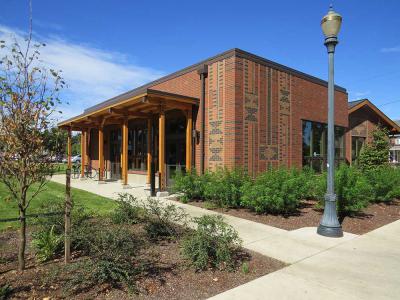
As a young Native American student at UCLA, Allison Davis-White Eyes says that at first, she just wanted to blend in. It wasn’t until her sophomore year that she realized she needed to find a place to process her experiences and find others of a similar background.
Eventually, Davis-White Eyes connected with her campus’ Native American organization. “I’m very thankful for that connection,” she says, “because it helped me demystify the academic experience. At the same time, I realized that it’s important to be in dialogue with everyone else on campus.”
Now, as director of diversity and cultural engagement at Oregon State University, Davis-White Eyes oversees the seven cultural resource centers (CRCs) sprinkled across campus at OSU, each a hub of diversity and cultural learning.
CRCs “not only serve as a safe space for people from specific communities, but are also places for intergroup dialogues where everyone can come from across campus and engage in big questions,” Davis-White Eyes says.
Jason Dorsette, director of the Lonnie B. Harris Black Cultural Center, says OSU has “put its money where its mouth is” by investing in its CRCs. The black cultural center received a new building earlier this year, as did the Asian and Pacific Cultural Center. The Ettihad Cultural Center, representing cultures from Southwest Asia through North Africa, has a home in the brand new Student Experience Center.
Dorsette says OSU recently put millions of dollars toward its cultural centers, using funds from its $1 billion capital campaign. “We want to make sure no one graduating from OSU can say, ‘I have no idea what diversity is,’” Dorsette says.
Each of the seven CRCs provide job opportunities for students. Sam Fricke, a graphic designer studying new media communications at OSU, works at the Native American Longhouse Eena Haws, which received a new building in 2013.
Fricke says he enjoys the supportive atmosphere of the longhouse.
“OSU is not the most diverse of campuses, so we’re trying to encourage communication between cultures,” Fricke says. “I’m Native American, and a lot of people may never have met a Native American person. The longhouse is a place to understand the world better.”
Davis-White Eyes emphasizes that CRCs are for everyone and promote inclusivity, all part of the open dialogue approach she learned as a student.
“We have a wide array of programs that go beyond race and culture,” she explains. “It can be about gender, class or international issues. By opening up diversity in its broadest sense, we create a space where people feel they can be a part of this conversation, a part of the solution. It has made a very big difference on our campus in terms of building community.”
In other words, people of Euro-American descent are welcome to join in. When students interact with different cultures for the first time in college, Davis-White Eyes says, the experience can change the way they look at the world after graduating.
“Our hope is that through experiences students have in our cultural resource centers and with academic faculty, they will come away with the capacity for empathy and have courage to explore things that may be new, different or maybe even uncomfortable,” she says. “We hope they try to understand the world from different perspectives.”
The full list of CRCs at OSU includes the Asian and Pacific Cultural Center, Centro Cultural César Chávez, the Ettihad Cultural Center, the Lonnie B. Harris Black Cultural Center, the Native American Longhouse Eena Haws, the Pride Center and the Women’s Center. See dce.oregonstate.edu for more.
The University of Oregon also has cultural centers. Check out inclusion.uoregon.edu.